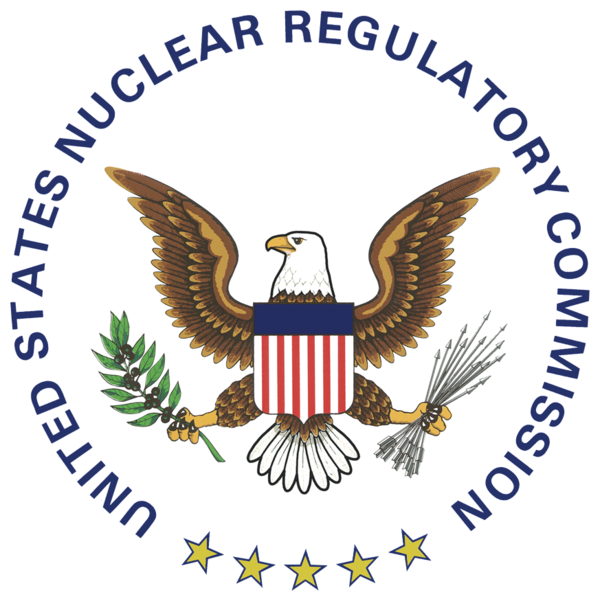In 1974 the Energy Reorganization Act broke up the Atomic Energy Commission and established the Nuclear Regulatory Commission (NRC) to assume duties for regulating the U.S. nuclear industry. These duties include radioactive materials safety, reactor licensing and renewal, reactor safety and reactor security. They also include monitoring and regulation of the storage, security, recycling and disposal of spent nuclear fuel.
The NRC is divided into four regions of the United States. Region I covers the northeastern states, Region II covers the southeastern states, Region III covers the Midwestern states and Region IV covers the western and south central states. There are 104 reactors producing electrical power and 36 reactors used for other purposes in these regions. Each of the reactors that produce power have onsite NRC inspectors to monitor daily operations. NRC Teams composed of a variety of specialists periodically carry out targeted inspections at the reactors. There are provisions for whistleblowers to report problems as part of the special NRC Allegations Program. Unfortunately there are cases where a whistleblower pointed out illegal practices which it turned out that the NRC had been aware of and had failed to respond to. The NRC also monitors training programs for nuclear workers and accreditation of training facilities.
Like the Atomic Energy Commission before it, there has been concern that the NRC is not doing a competent job of regulating the nuclear industry and has become a servant instead, a situation called regulatory capture. The NRC has been found to have failed to enforce its regulations thoroughly and uniformly on the 104 nuclear power reactors and their operators. This failure to enforce regulations was found to not only be a matter of incompetence and neglect but the NRC has actually stated that it chooses not to enforce regulations in some cases. The NRC has been accused of surrendering some of its regulatory authority to the Institute for Nuclear Power Operations which was formed by the nuclear industry. In addition, at times the NRC has apparently made it difficult for the public to obtain information about and to participate in regulation of the nuclear industry. In spite of the Three Mile Island accident in 1979, the NRCs record of regulatory effectiveness has continued to decline.
Many nuclear power plants have reached or are approaching the end of their projected fourty year life span. Operators have applied for and been granted twenty year extensions of their licenses by the NRC even though state legislatures and objected and a pattern of lies by plant operators with respect to dangerous safety issues has been ignored by the NRC. The Union of Concerned Scientists issued a report in 2011 stating that the NRC enforcement of safety rules has not been "timely, consistent, or effective." The report claims that serious accidents have been narrowly avoided on a number of occasions because of NRC negligence.
Following the Fukushima disaster in March of 2011, a group of concerned organizations and individuals have formally petitioned the NRC to "immediately suspend all licensing and other activities at 21 proposed nuclear reactor projects in 15 states until there is a thorough examination of all existing and proposed reactors. In response to pressure, the NRC is moving forward to implement new safety procedures to enable nuclear plant operators to adequately cope with natural disasters such as earthquakes and tsunamis. We can only hope that the NRC become more effective before a major disaster destroys reactors and shuts down part of the power grid in the United States.
